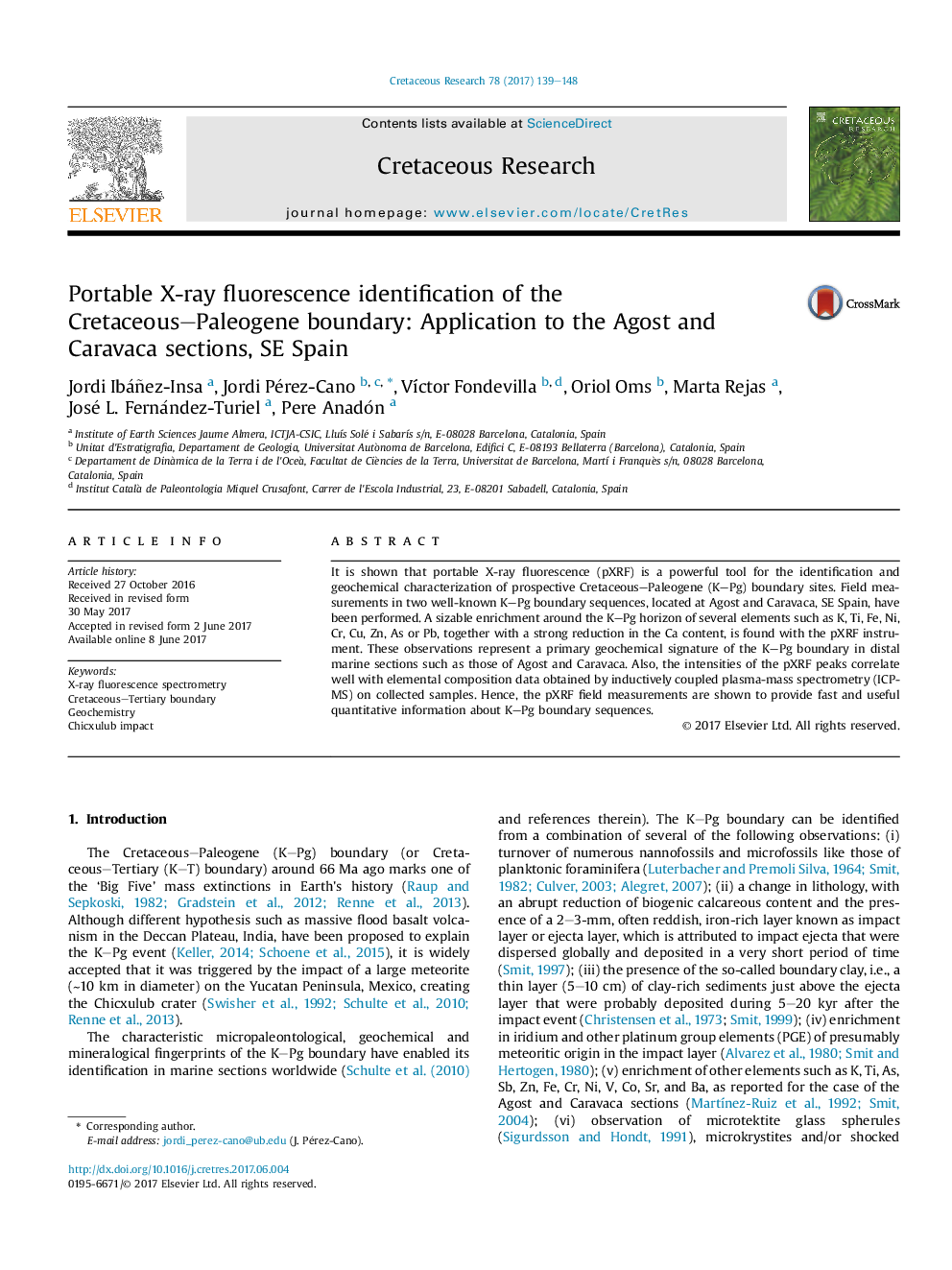| Article ID | Journal | Published Year | Pages | File Type |
|---|---|---|---|---|
| 5787919 | Cretaceous Research | 2017 | 10 Pages |
â¢Portable X-ray fluorescence is used to identify geochemical anomalies.â¢Ti, Fe, Ni, Cr, As, Pb anomalies at the K-Pg boundary of Agost and Caravaca.â¢The XRF signals display good correlations with ICP-MS abundancies.
It is shown that portable X-ray fluorescence (pXRF) is a powerful tool for the identification and geochemical characterization of prospective Cretaceous-Paleogene (K-Pg) boundary sites. Field measurements in two well-known K-Pg boundary sequences, located at Agost and Caravaca, SE Spain, have been performed. A sizable enrichment around the K-Pg horizon of several elements such as K, Ti, Fe, Ni, Cr, Cu, Zn, As or Pb, together with a strong reduction in the Ca content, is found with the pXRF instrument. These observations represent a primary geochemical signature of the K-Pg boundary in distal marine sections such as those of Agost and Caravaca. Also, the intensities of the pXRF peaks correlate well with elemental composition data obtained by inductively coupled plasma-mass spectrometry (ICP-MS) on collected samples. Hence, the pXRF field measurements are shown to provide fast and useful quantitative information about K-Pg boundary sequences.
